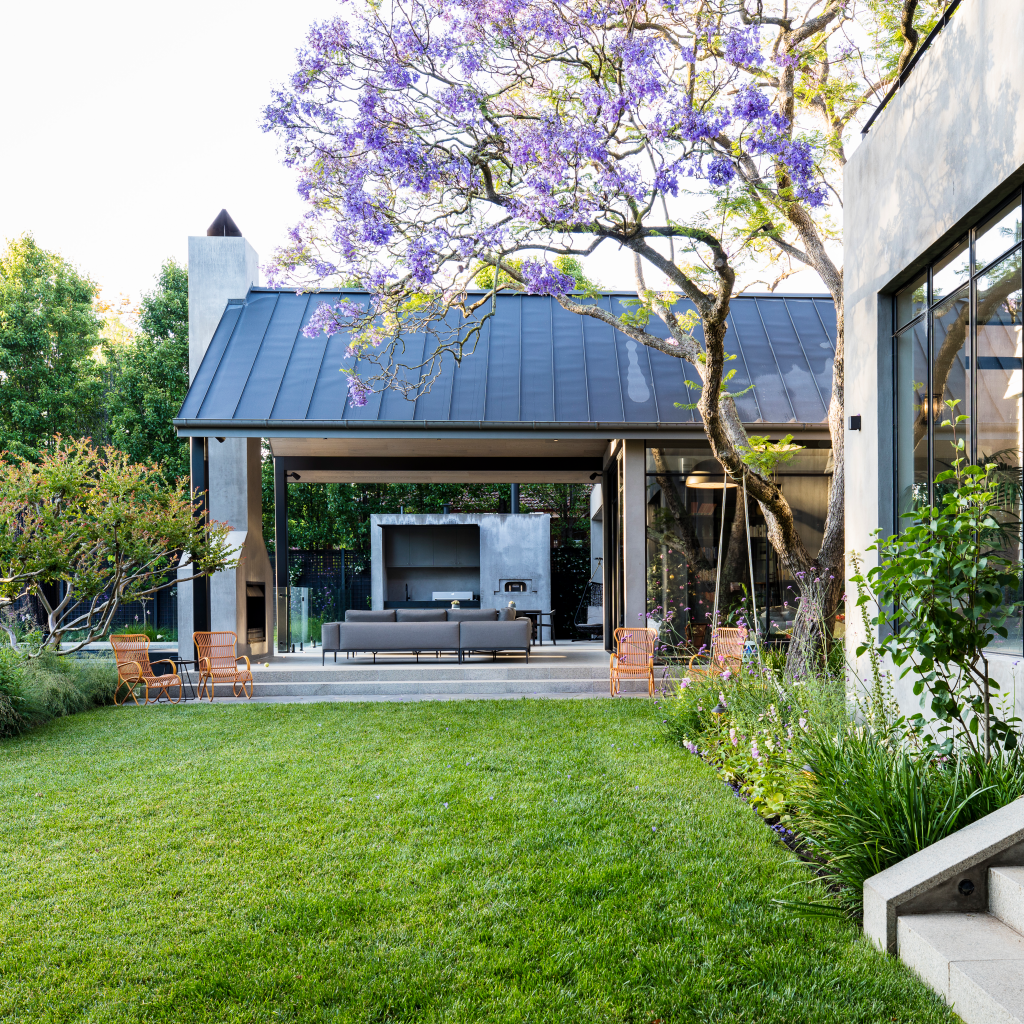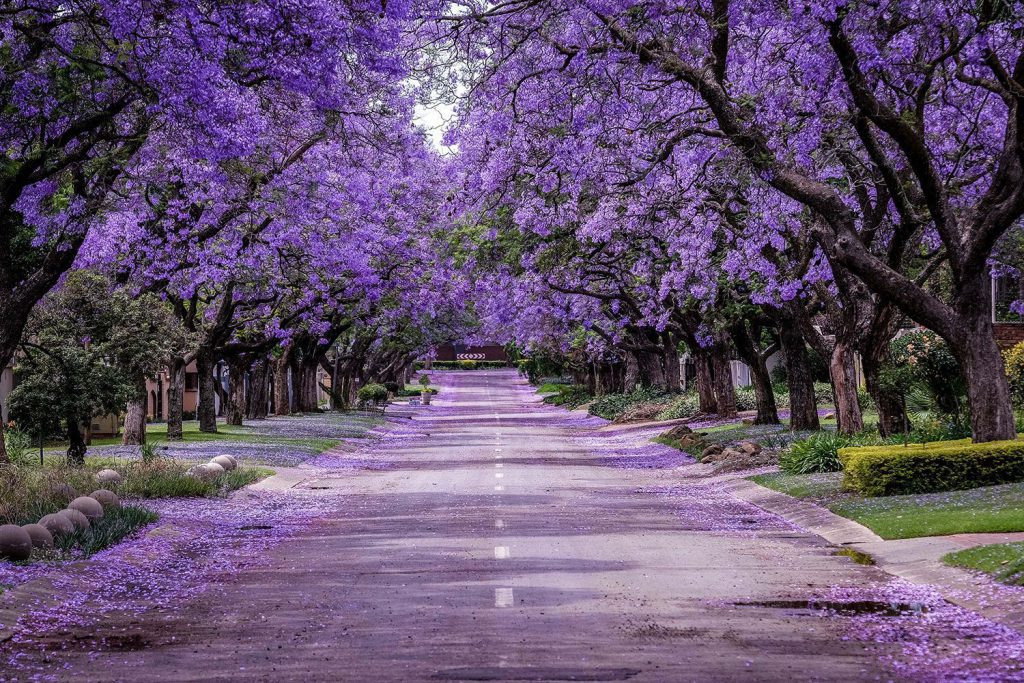Jacaranda mimosifolia are incredible feature trees best recognised for the breathtaking purple flowers they produce in summer. The bell-shaped purple flowers cover the canopy, creating a sea of colour, making them perfect for large gardens or street planting. Outside of summer, Jacarandas have soft, green foliage which turns yellow in winter before dropping. Since Jacarandas are so prominent throughout Australia, they are often mistaken as Australian natives but are actually native to South America.
How to plant
Jacarandas thrive best in tropical and warm climates but can also be grown in cooler areas that experience light frost. We’ve had much success planting Jacarandas in many suburbs throughout Melbourne, including this one in Camberwell. If you are growing in cooler climates, your tree may not grow to be as large as it would in a warmer climate. Nevertheless, they will still produce beautiful purple blooms.

A sunny position with well-drained and fertile soil is ideal. Mulching around the roots of the tree will ensure that the soil retains its moisture. Jacarandas are quite large trees and grow to be anywhere between 10m – 15m high and just as wide. So, unfortunately, they are not well-suited to smaller yards. When the flowers begin to rain, the area beneath will be blanketed in a sea of purple colour. It’s imperative to be mindful of where you plant your Jacaranda to avoid flowers from falling into areas of your garden (i.e. pools) that may cause damage.

Source: Delicious
Care and Maintenance
Jacarandas are a generally hardy plant and, if anything, they are a little sensitive to frost, which is why they prefer a warmer climate. One of the golden rules of Jacarandas is NOT to prune them. Pruning will promote vertical growth that will prevent the tree from creating its spreading, dome-like canopy, for which it is so well known for. If you do or have pruned your Jacaranda in the past, you will have to continue to cut off the vertical shoots. In summer, you will need to regularly water the soil around your Jacaranda to ensure the earth remains moist throughout the warmer months.


